Rogue Company is Hi-Rez's grungy take on a co-op PVP shooter
Former Halo world champion, Scott Lussier, is the lead designer.
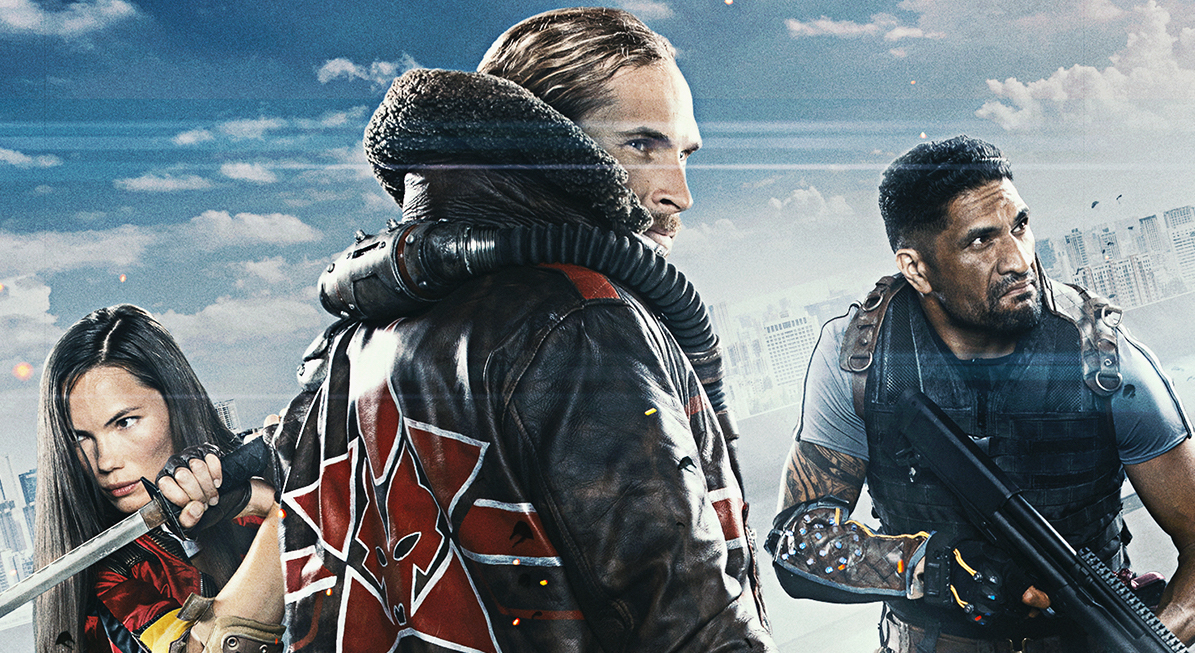
Jumping out of a hoverplane with the rest of my four-person crew I cast an eye across Rogue Company's industrial canal map. I can see the opposing team in the sky, their red contrails giving me some basic information on where they'll make landfall.
Rogue Company is Hi-Rez's third-person multiplayer shooter. I'm playing the 4v4 Extraction mode where you earn victory by hacking an objective (in this case a laptop), counter-hacking an objective, or – because this is a shooter – mowing down every one of the opposing team and forcing them to sit through a replay of your winning kill.
You start the game with a secondary weapon and some loose change – enough for a grenade of some kind, or maybe an upgrade to that secondary weapon. At the start of each round you'll get to use the shop again, spending the cash you've earned by winning rounds, turning an attack round on a foe, successfully reviving downed teammates and so on. The shopping is CSGO-ish but the class-based nature of the game means that the items and perks for sale differ from mercenary to mercenary rather than being the same for every player.
I upgraded my pistol before jumping out of the plane. Now I need to pick a landing point. While I'm airborne the game uses a blue grid to mark the play area and glowing triangles highlight the starting points of the three main routes through the map. I think the enemy team mostly headed to the right-hand side so I swoop left. I'm hoping to buy time so I can get a sense of the map's layout before the firefighting begins in earnest.
I really want to tell you that this approach went perfectly to plan. That nobody got flanked. That nobody forgot they had bought a smoke grenade. That they absolutely remembered to use their character's special ability which lets them revive themselves when downed. That they definitely didn't die behind a shipping container. That they definitely equipped their primary weapon once they bought it. That... Actually, none of you were there so you can't fact check what happened to my mercenary – EVERYTHING WENT TO PLAN!
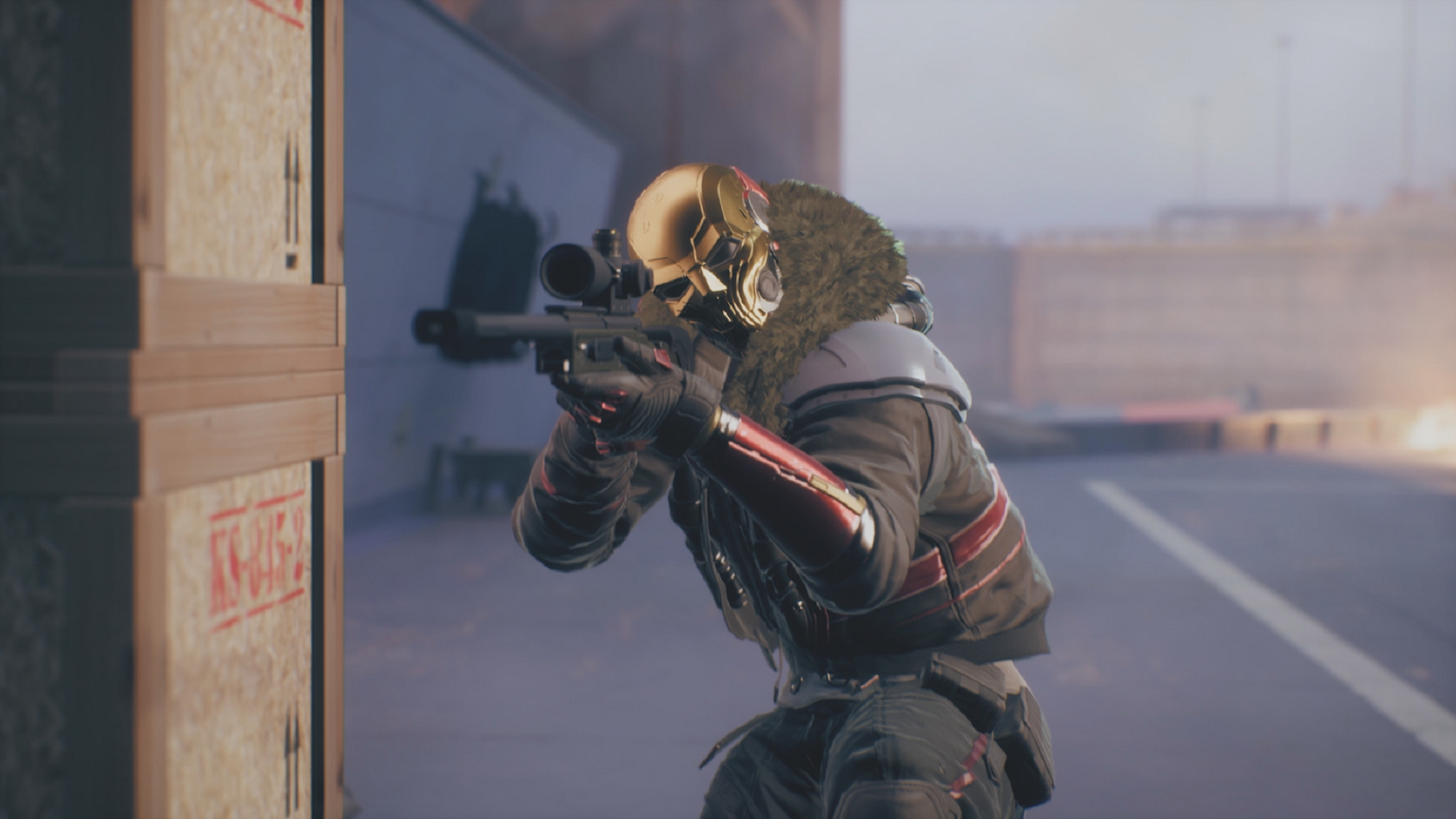
While everything went to plan my growing map familiarity started to pay off. Flanking routes stopped catching me out, and I started deploying gadgets like tripmines with more finesse, making it easier to protect certain areas or to force the enemy to change route. I was also delighted by the hotkey for swapping between right and left shoulder view – good for left handers and people flummoxed by peeking round the left side of walls.
All of this learning culminated in one of those supremely satisfying competitive shooter moments when Rogue Company's lead designer Scott Lussier – a former Halo world champion, no less—watched me score four kills in a row. You are absolutely welcome to fact check that, by the way. I might even put it on my CV.
The biggest gaming news, reviews and hardware deals
Keep up to date with the most important stories and the best deals, as picked by the PC Gamer team.
Rogue Company has been in active development for two years. The result is a game which Lussier hopes will present players with "dynamic combat puzzles". The roster of playable mercenaries is one part of the puzzle as each of them is suited to slightly different playstyles and can be built out in slightly different ways using the shop. Another aspect is the player's own skillset and their tempo—for example, whether they rush in or hang back.
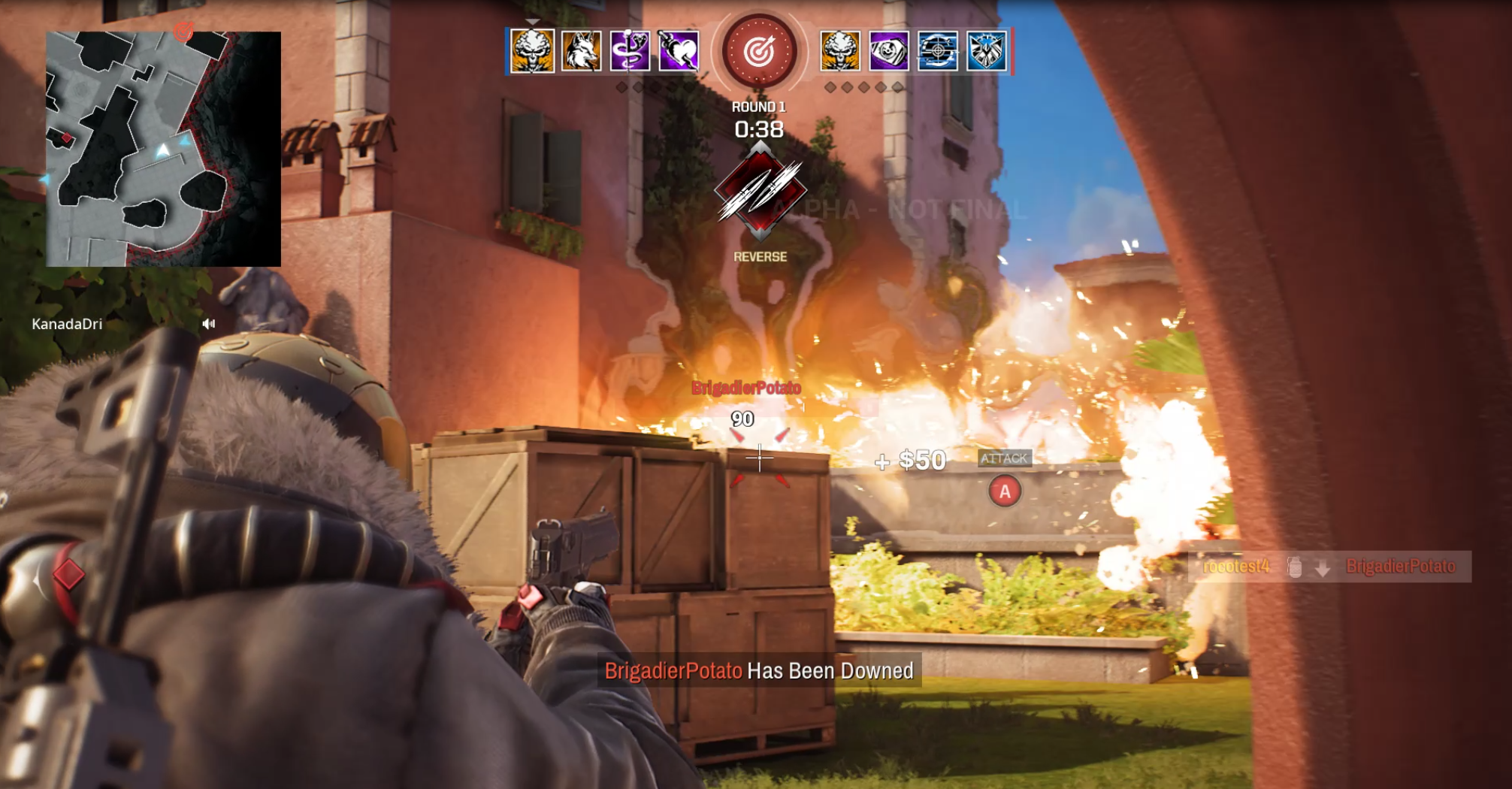
One of the characters I tried was Dima, a chap with a golden face mask. His passive ability (Intuition) lets him detect nearby enemy equipment, "even through walls", and his active ability (the Burst Launcher) lets him fire a grenade launcher. That grenade actually breaks up into lots of mini grenades and the scattered damage is useful for winkling an enemy out from behind cover and into a vulnerable position.
Anvil, on the other hand, is a far more defensive option. His ability lets him drop a barricade which he and his teammates can use for extra cover, or perhaps to help block off a flanking route. The barricade actually has a glass screen which you can shoot out, using the resultant gap to take pot shots at your foes.
The hope is that, even though there might be some optimal choices for individual maps, players will have a lot of room for flexibility in their team compositions. For example, in a close-quarters map a sniper is going to struggle to find a shot so you'd probably look at other options (unless you are a Terrible Glory Hunter In My Matchmaking Bracket who has decided to instapick snipers forever because one time in every ten million you'll get a gif-able headshot), but the other options will depend on how you want to approach the objective.
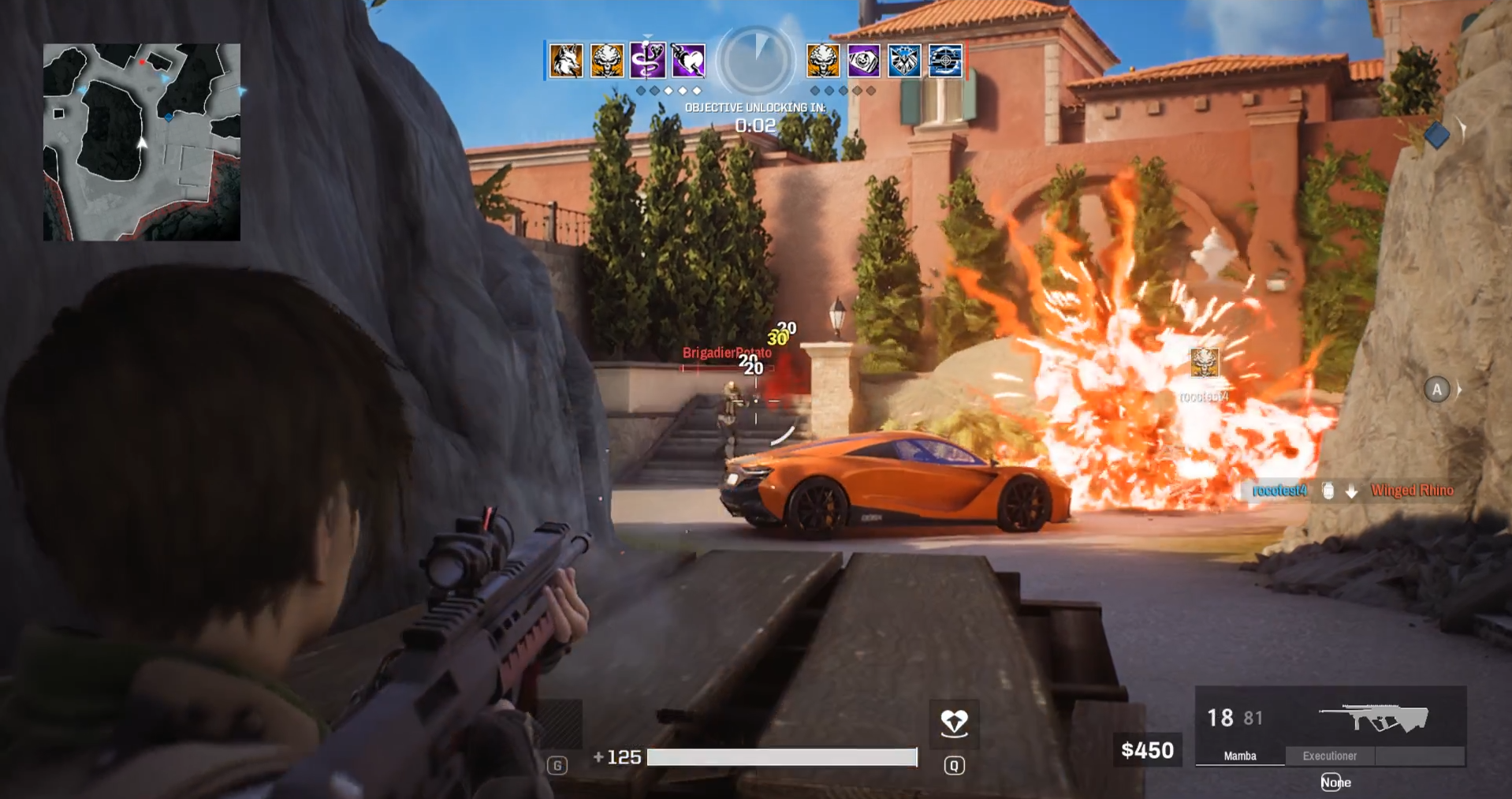
At the moment the 4v4 Extraction mode and a 2v2 Wingman mode (which takes place on a smaller map and involves hopping a few feet from the plane to the ground rather than a full skydive) are the only modes in Rogue Company, but others are on the way.
"We have a lot of different ideas that we're exploring," says Lussier. "King of the Hill is one of the ones that is highest on the board because people love King of the Hill—I love King of the Hill! [But] it still has to hit the pillars of the game, which is lots of replayability, it needs to include the item shop, and it has to be dynamic."
In terms of the world's lore and storytelling, many of the specifics are under wraps at the moment. The basic story is that the mercs are part of the titular Rogue Company, a motley crew of combat specialists each drawn to the idea of working outside the confines of the law. It's a familiar setup—a gruff, shooty found family who sometimes come into conflict with another, even more prickly, vigilante organisation.
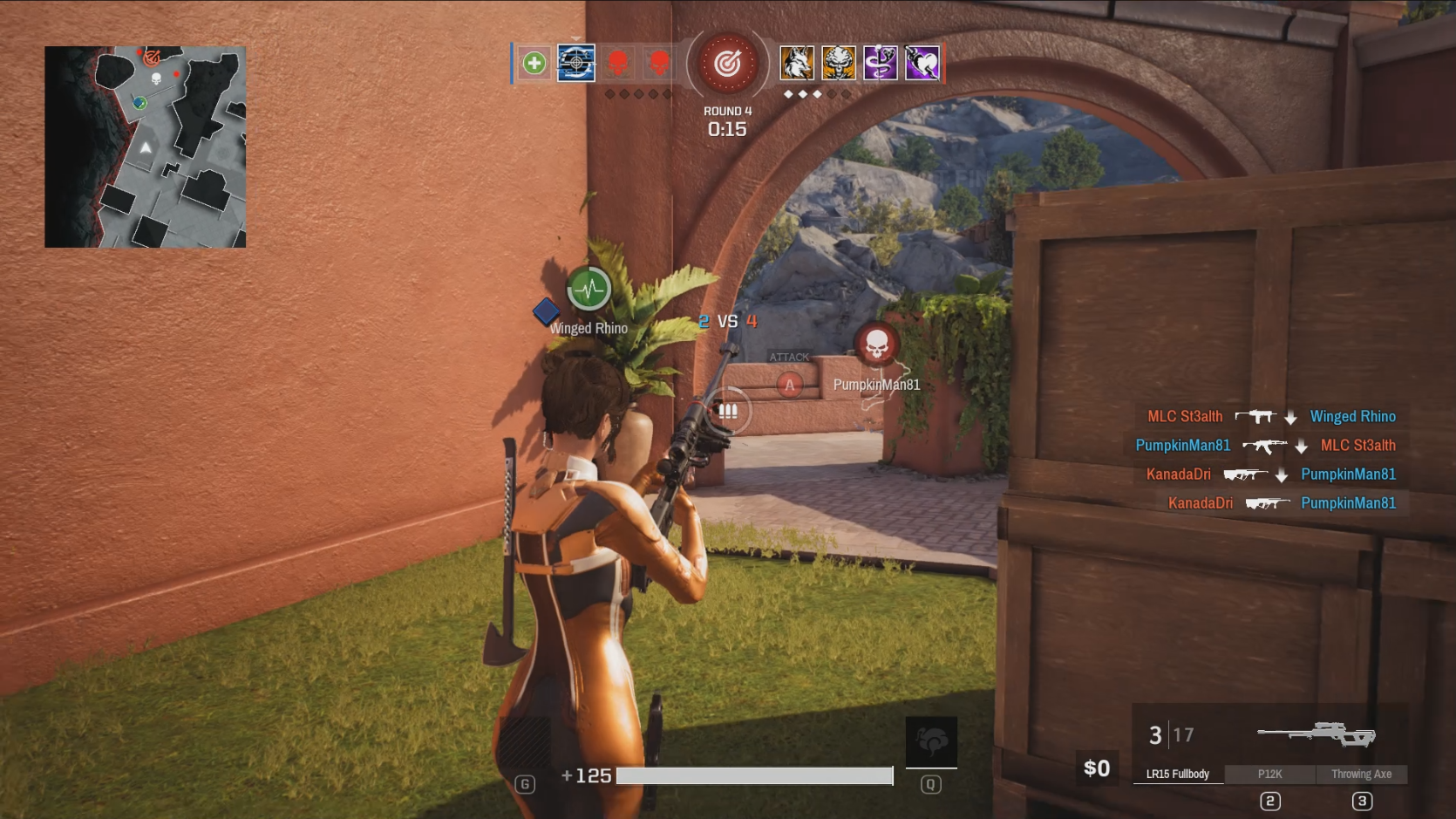
Taking the lead on the narrative is advanced game designer Evelyn Fredericksen. Fredericksen's previous work included a 15-year stint at Blizzard where she worked to craft a coherent narrative vision across its major franchises, "complete with timelines, fictional societies, weapons and magic, anatomy, naming conventions, languages, etc."
While our chat was carefully non-specific in terms of the game's narrative direction and most of the potential storytelling, I do know that a future map called Skyfell (a riff on a super-luxe Emirati skyscraper) includes some subtle nods to Hi-Rez's god-themed MOBA, Smite. I also know that Lussier regularly suggests blowing maps up á la Fortnite during dev meetings.
Rogue Company has just moved into alpha testing. The first wave of access keys now in the hands of curious players. But that only covers a small number of people right now so to help you figure out whether it's the type of shooter you would enjoy playing I devised a Very Useful Graph and asked Lussier and Fredericksen to mark where Rogue Company would sit.
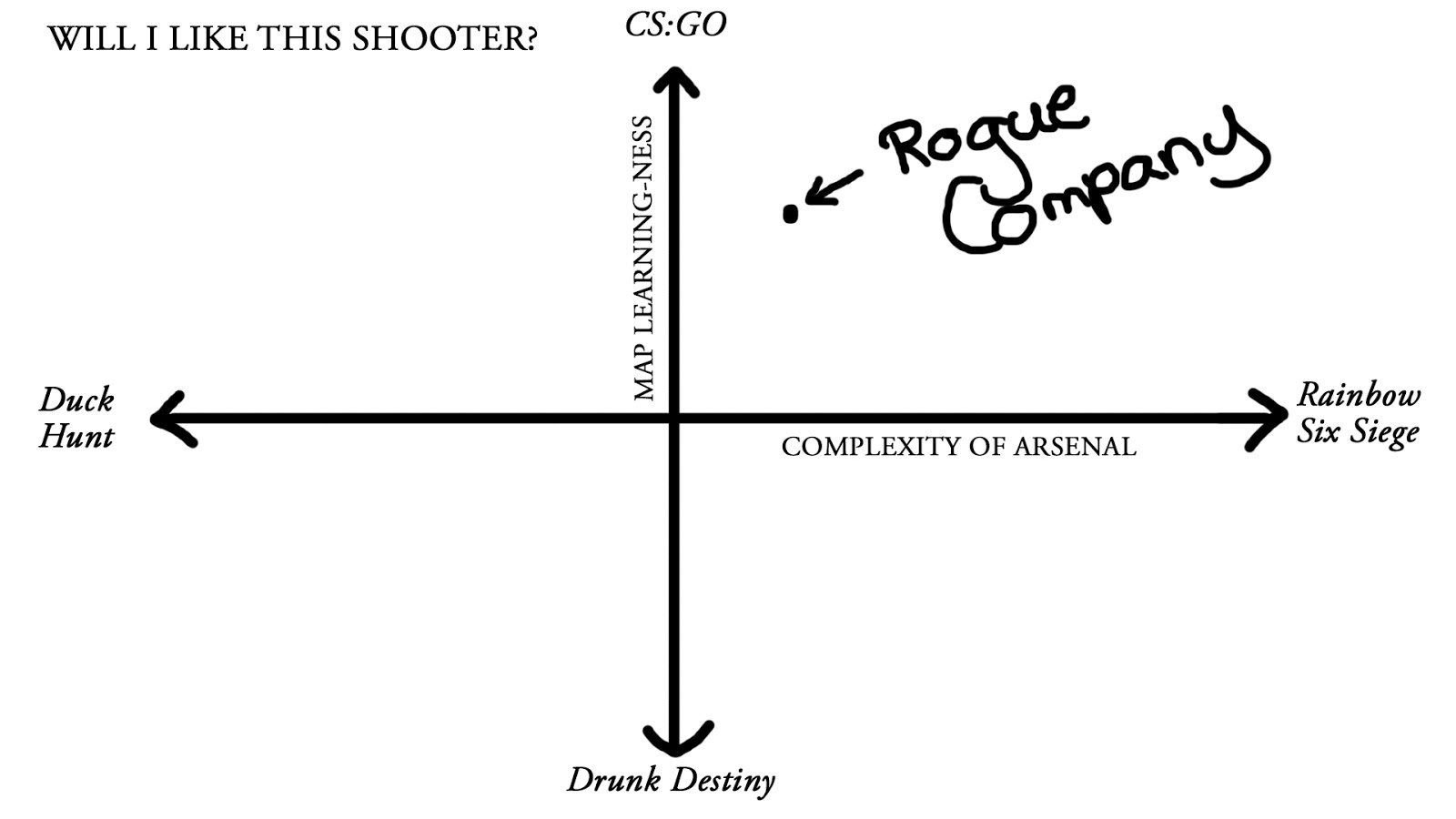
On the X axis is the complexity of your arsenal which runs from "I have one gun and maybe a grenade" over on the left, to "You'd better believe I'm a walking armory with four hundred guns, eight kinds of grenade, several drones, a robot dog, a snake cam, and a roast hog". The Y axis shows how beneficial it is to know the maps on a pixel-by-pixel level. That one goes from "running around the Control maps on Destiny after a night at the pub" at the bottom of the page, up to "this is CS:GO and we know the exact coordinates of every single flowerpot DO NOT TOUCH THEM".
"It's a little tough to get exactly right," says Lussier of the graph. "We were naturally going to lean more towards CS:GO in the sense of strategic depths as it's round-based, one life [gameplay] and that's kind of similar to Rainbow Six Siege. Our plan with weapons long term is that when they debut [they might] be unique to that class but they are going to be reused on future mercs as well. So if we have Dallas [a sheriff-type character], if we do another sheriff down the road, he might have the revolver as well. So we will be reusing guns, and that's just for a familiarity standpoint. So you're not going to have as many guns as Rainbow Six Siege, but the depth is going to be there."
Fredericksen's dot would be in the same ballpark—maybe a touch to the left of Lussier's. "We want you to have a constructive, good gameplay experience," she says. "So we want the maps to be not as easy, not as oh-my-gosh totally straightforward and predictable as Overwatch. But nowhere near to the point where you're stressing out [over] every single angle."

